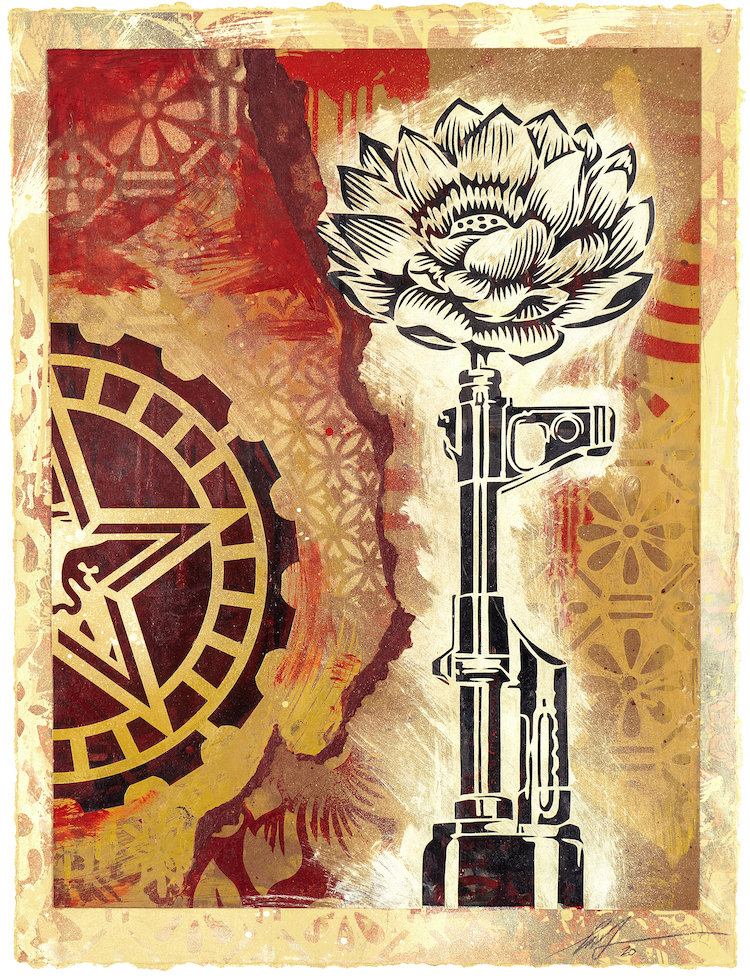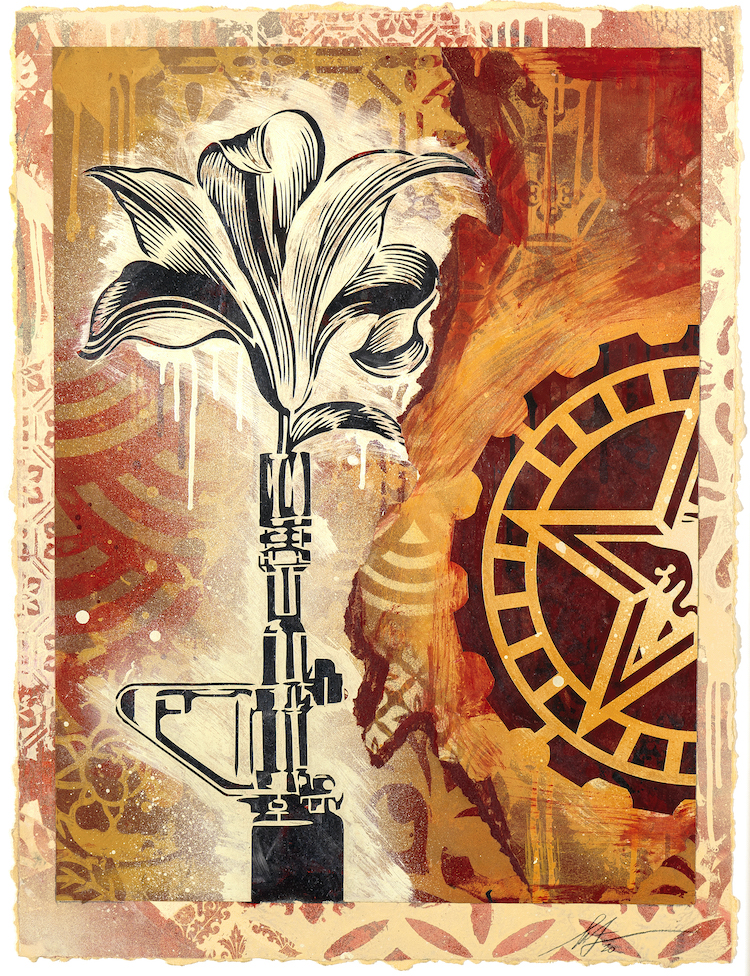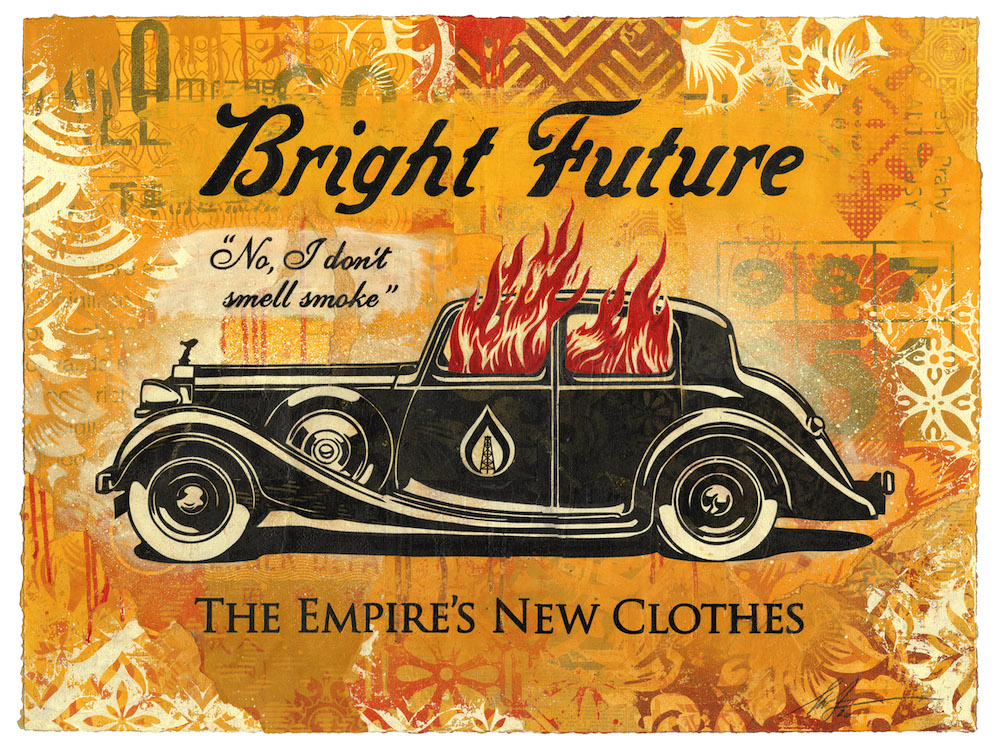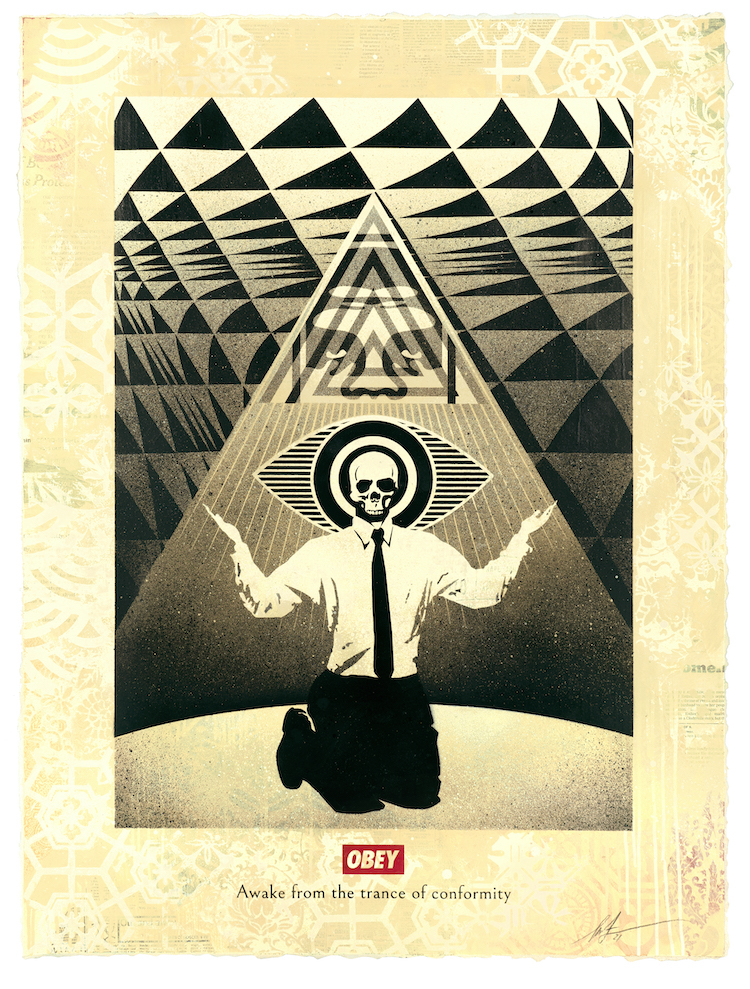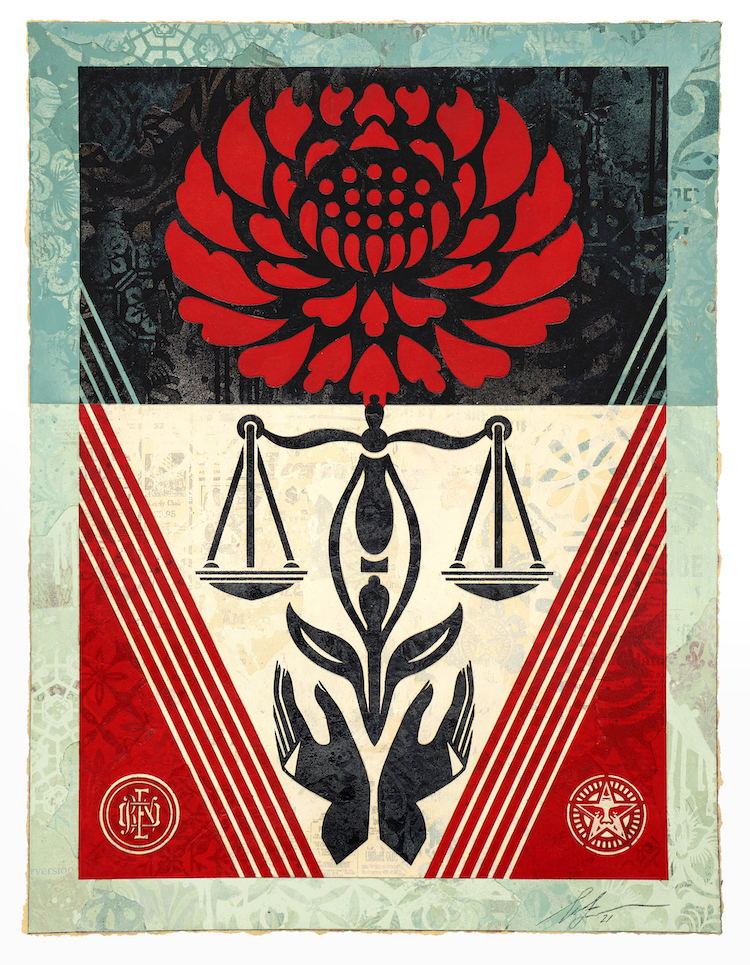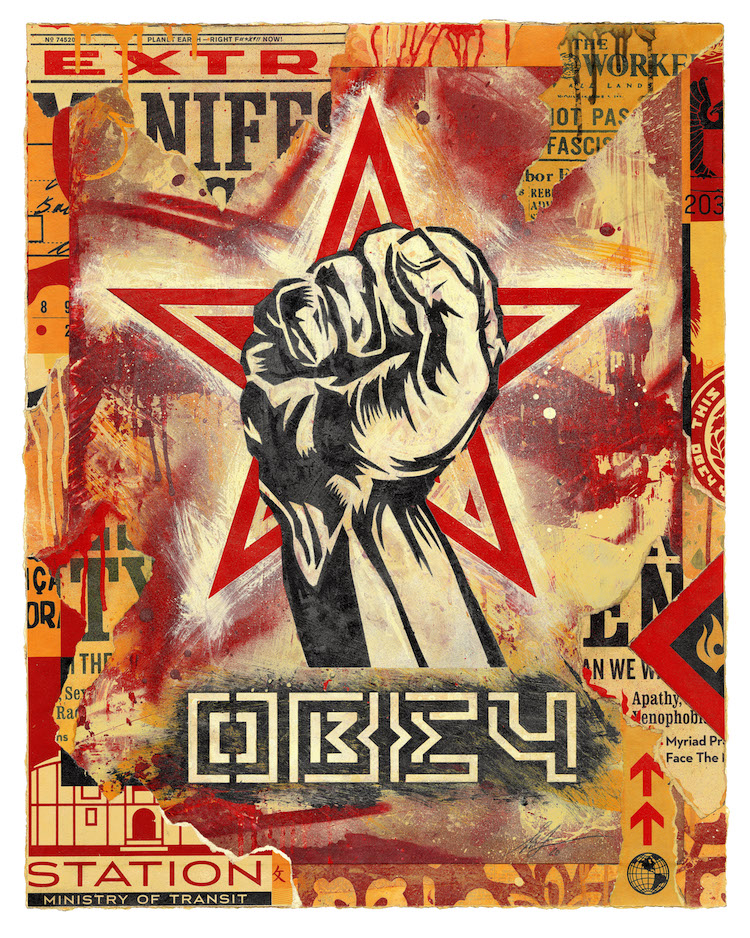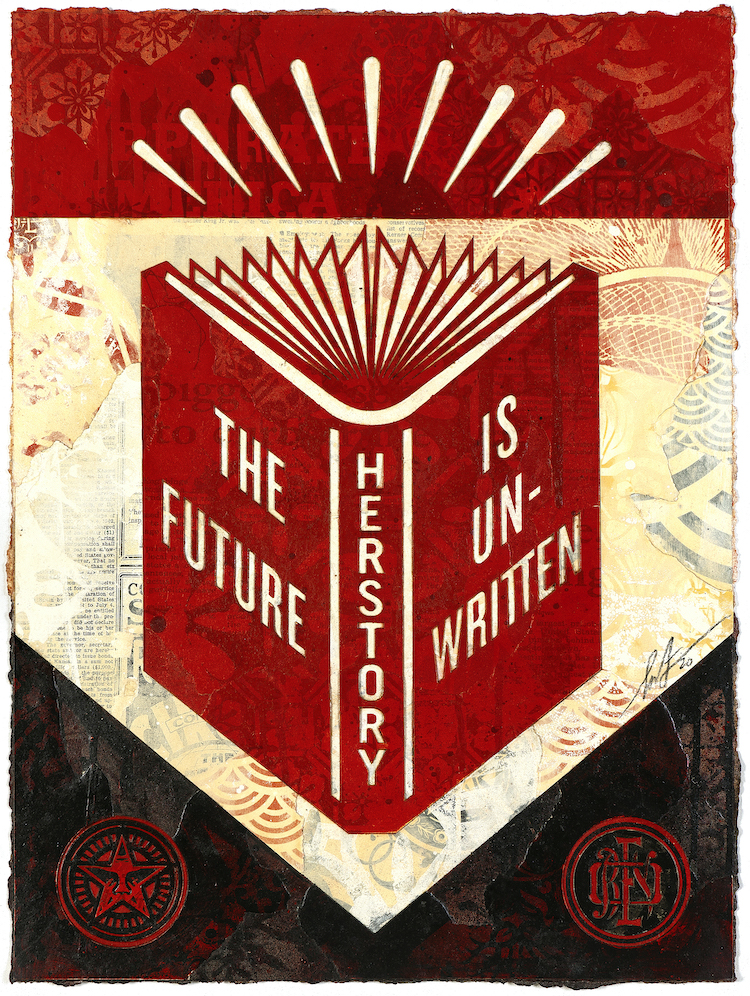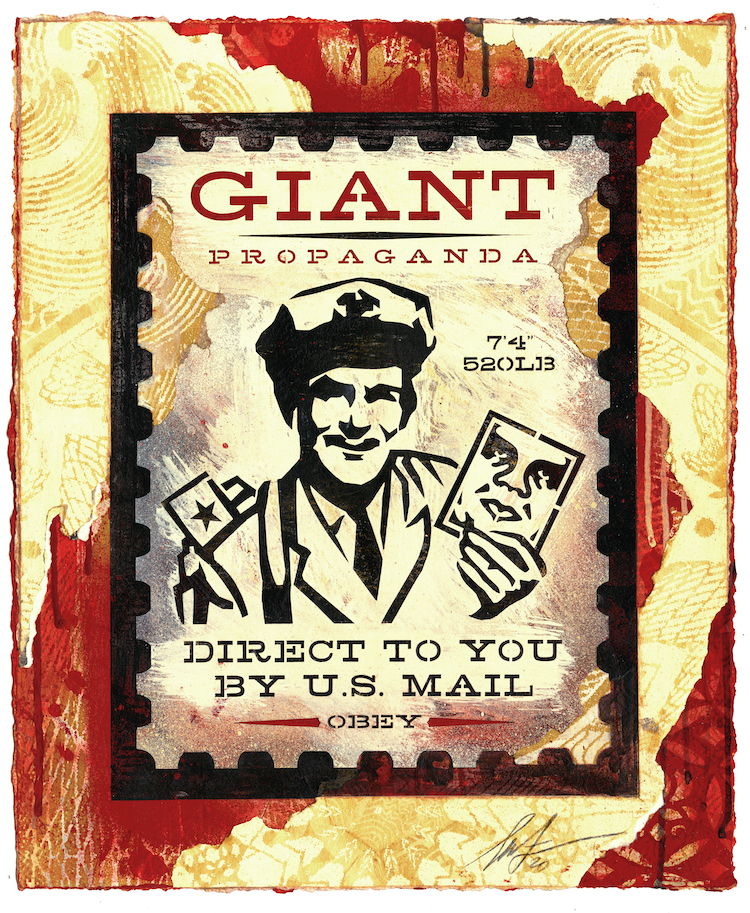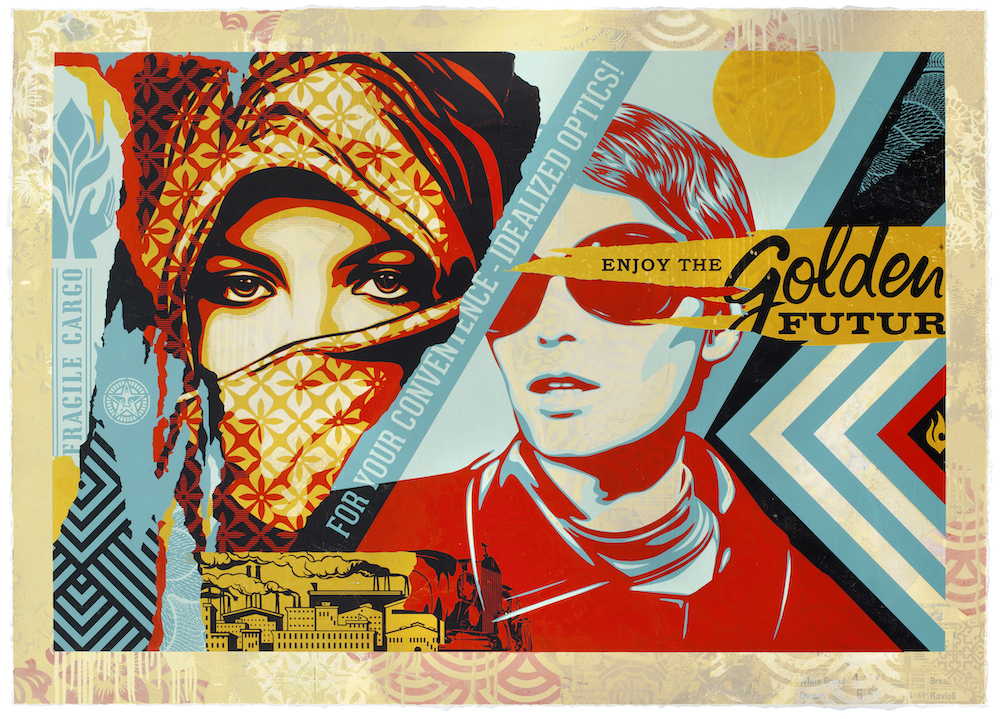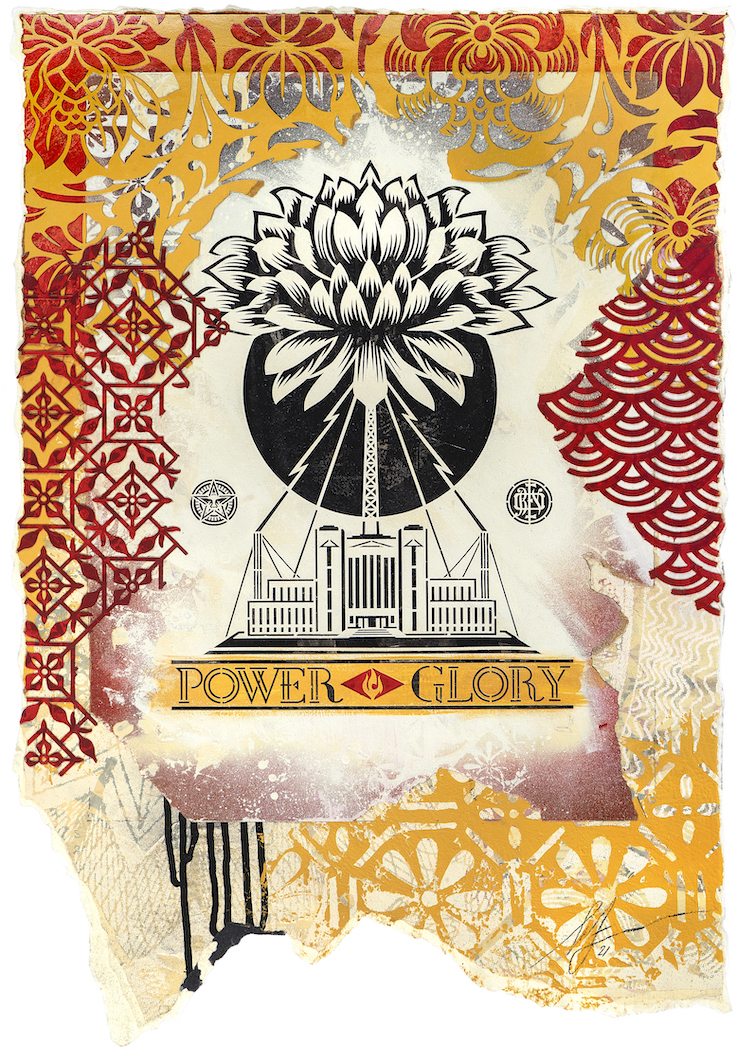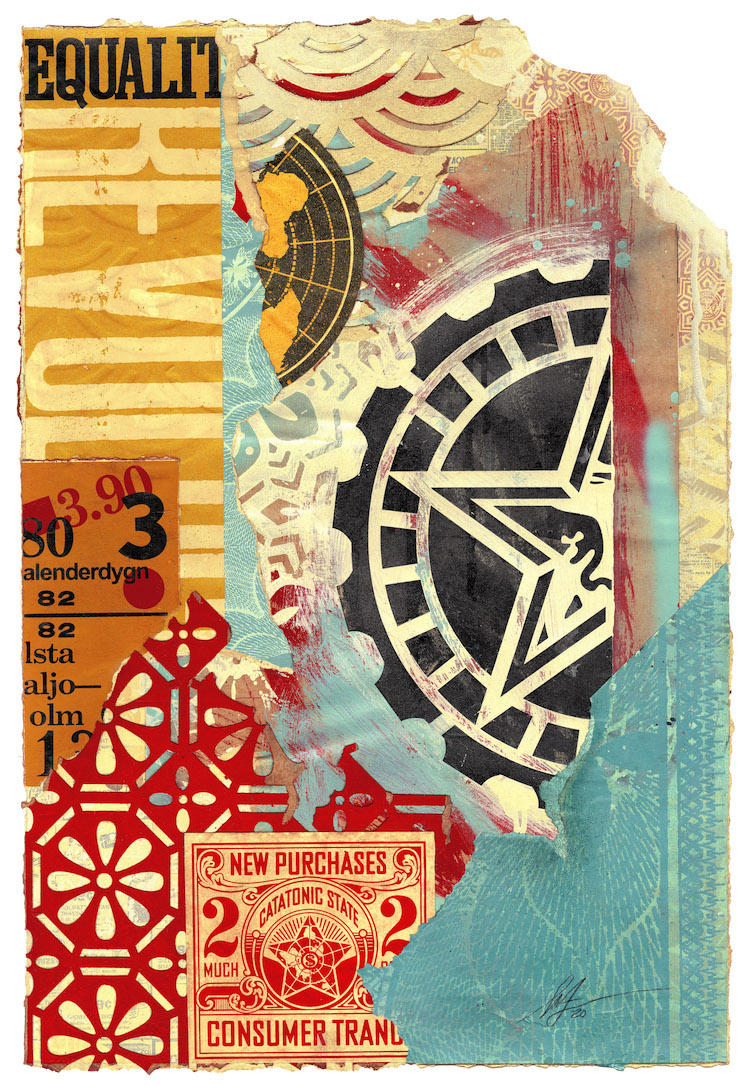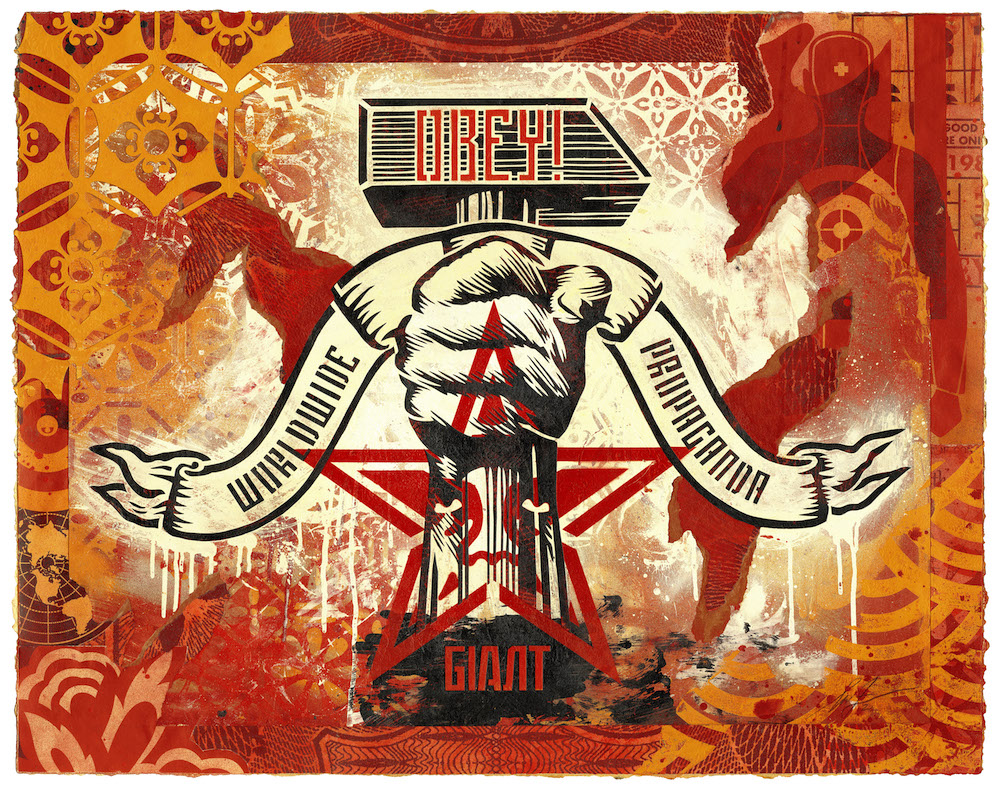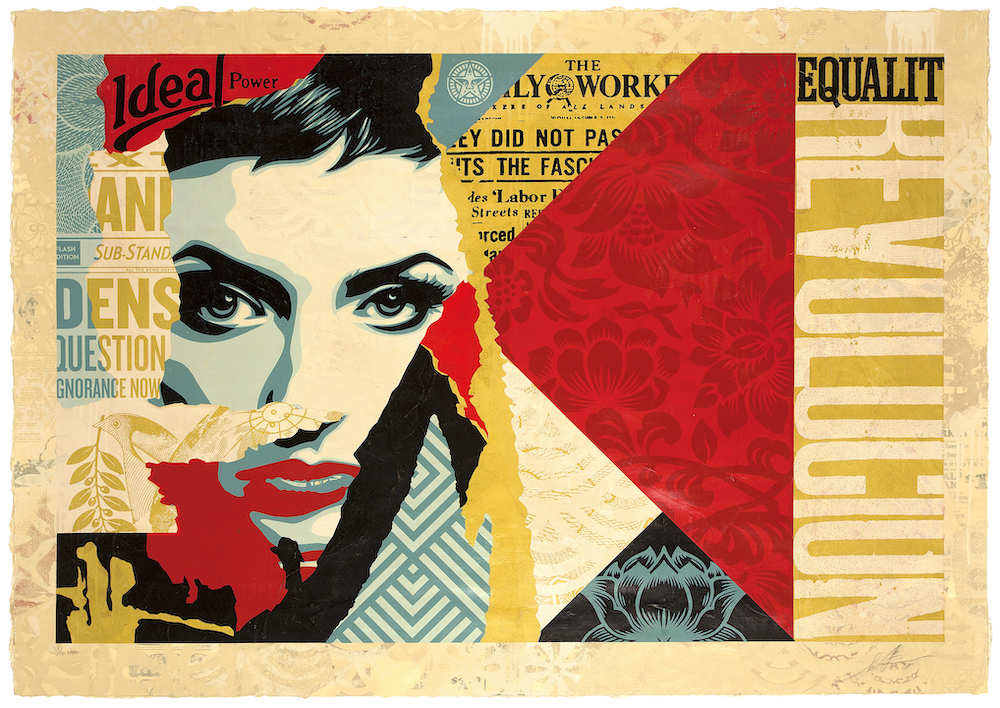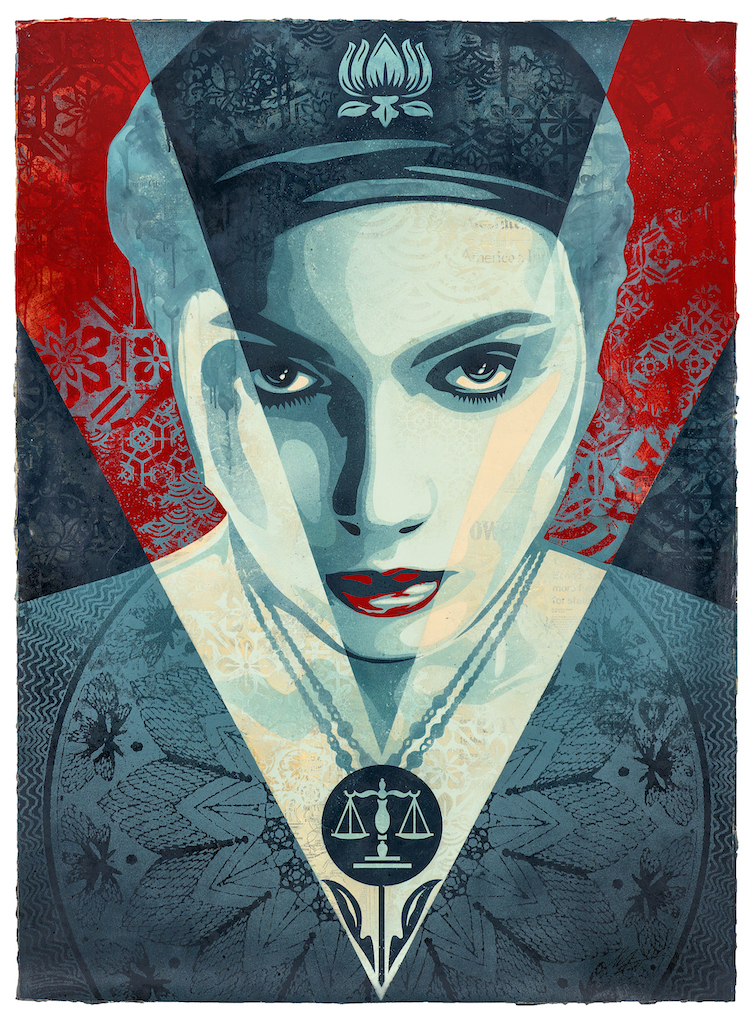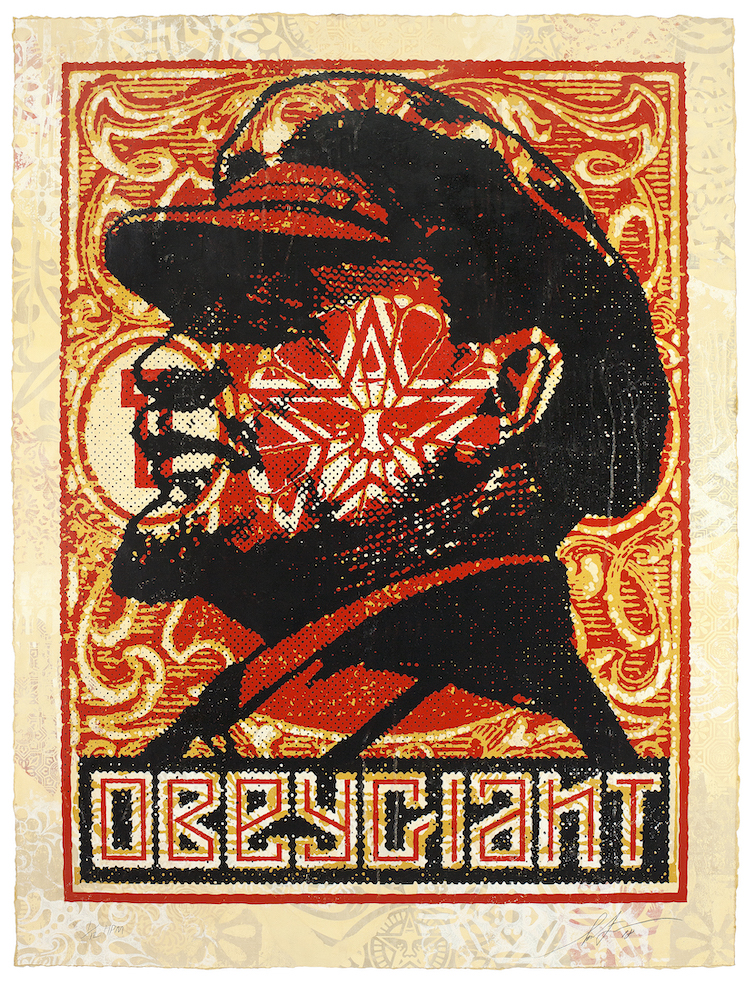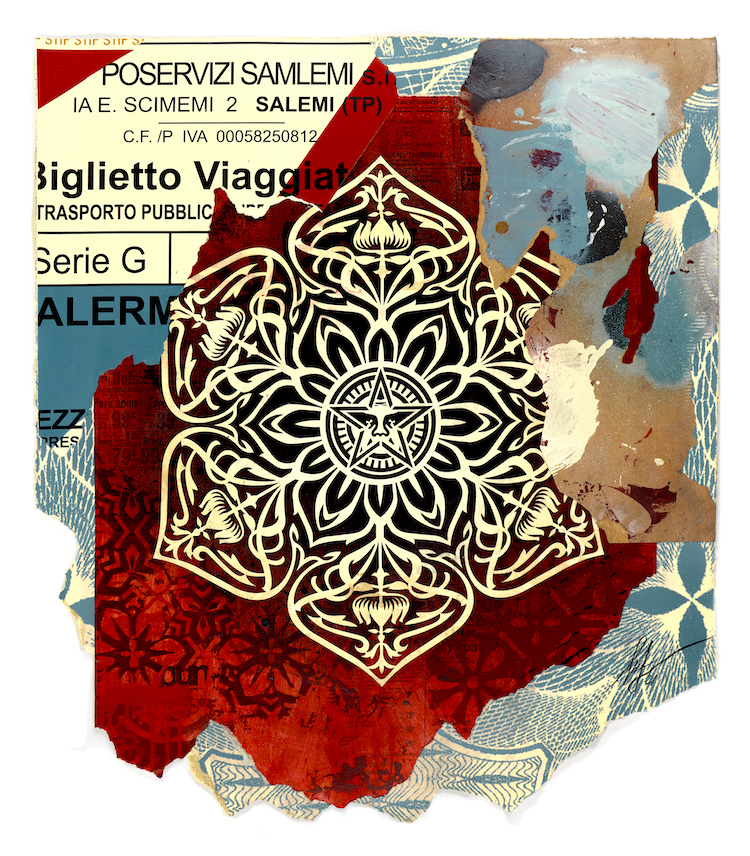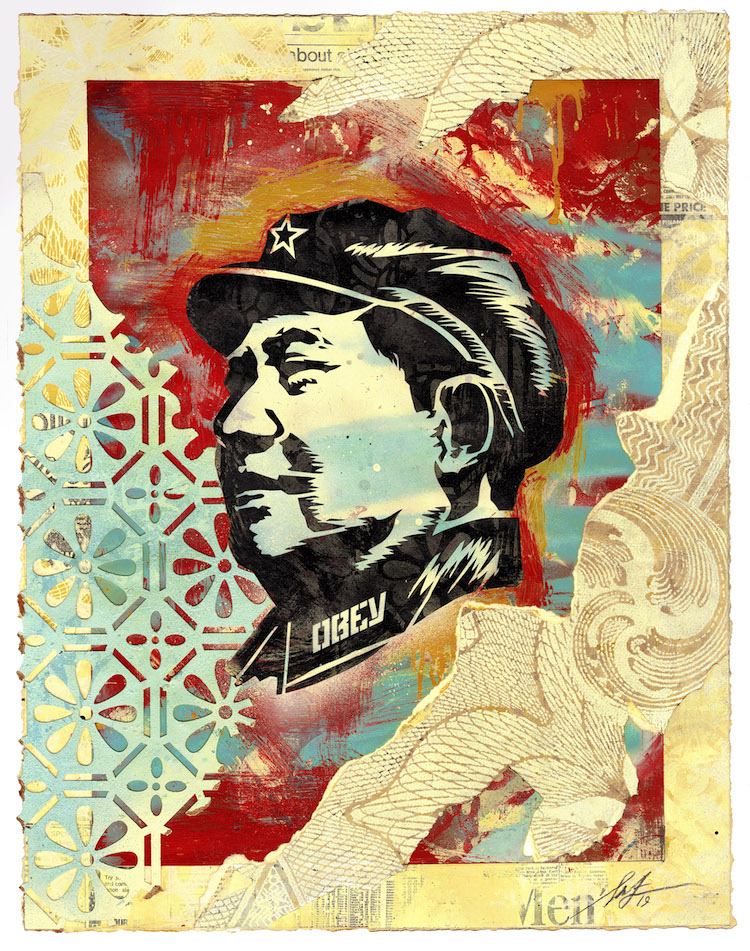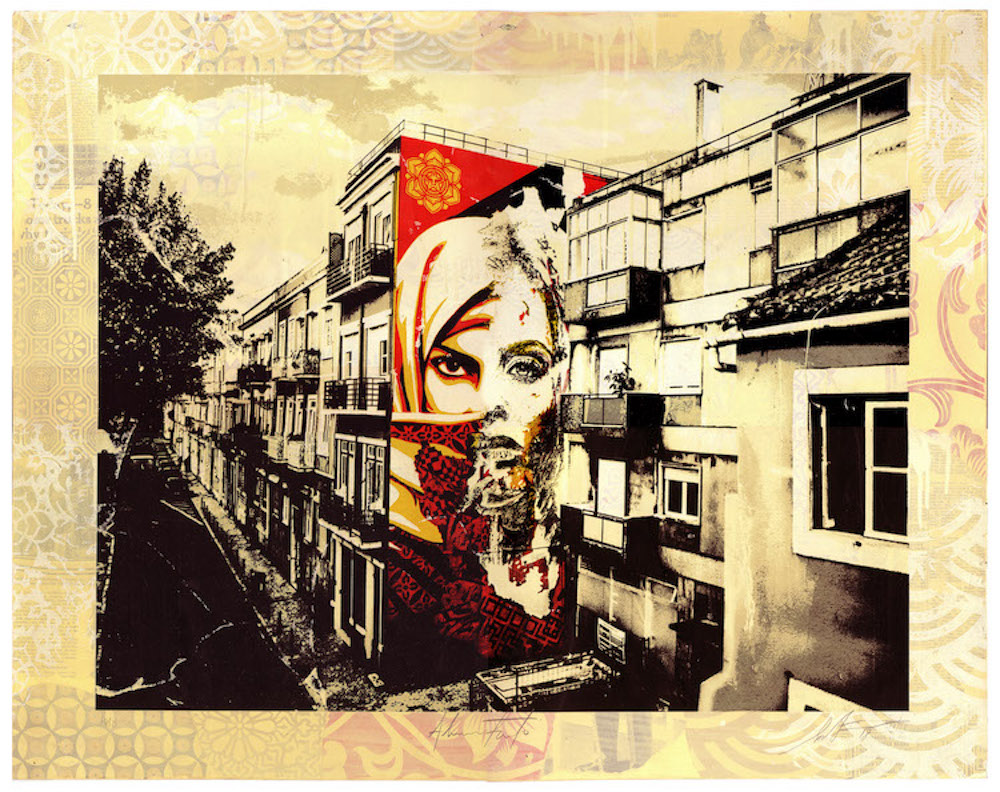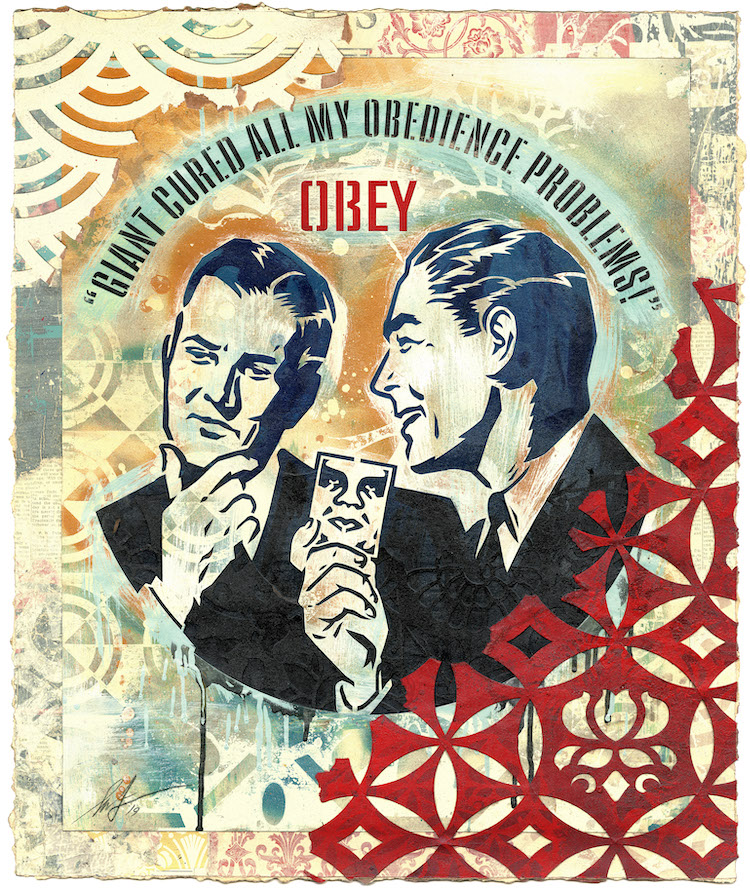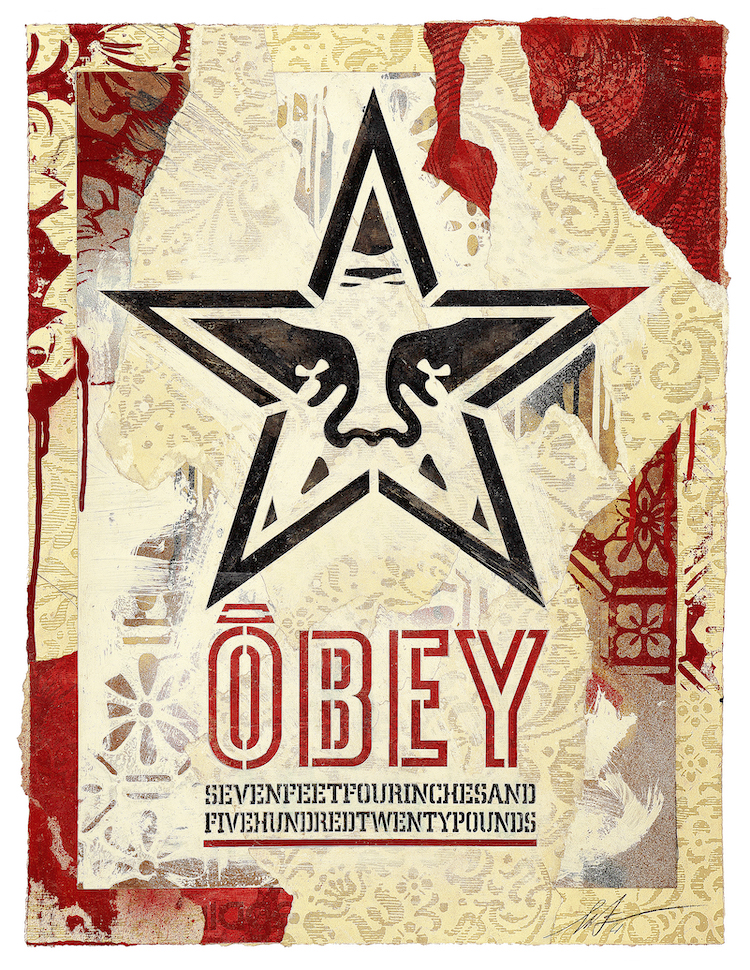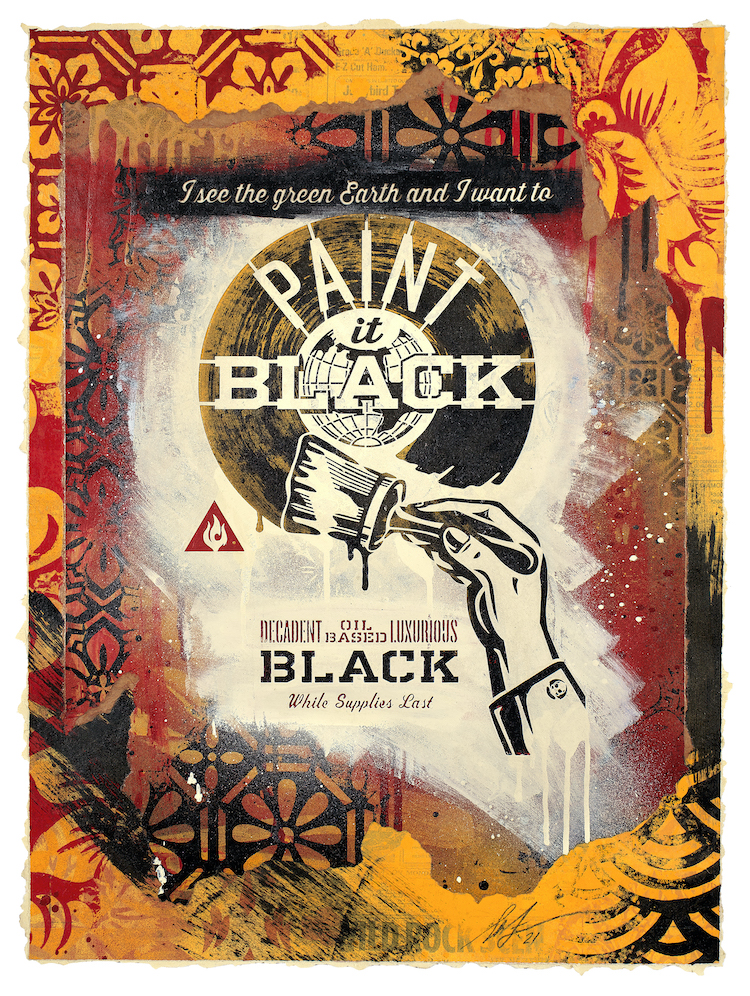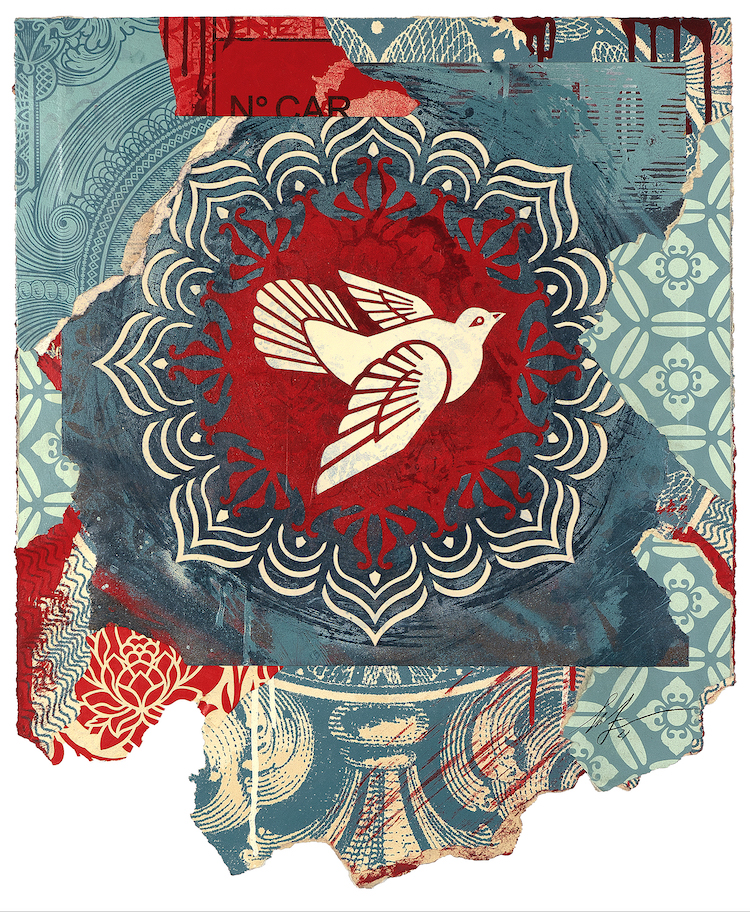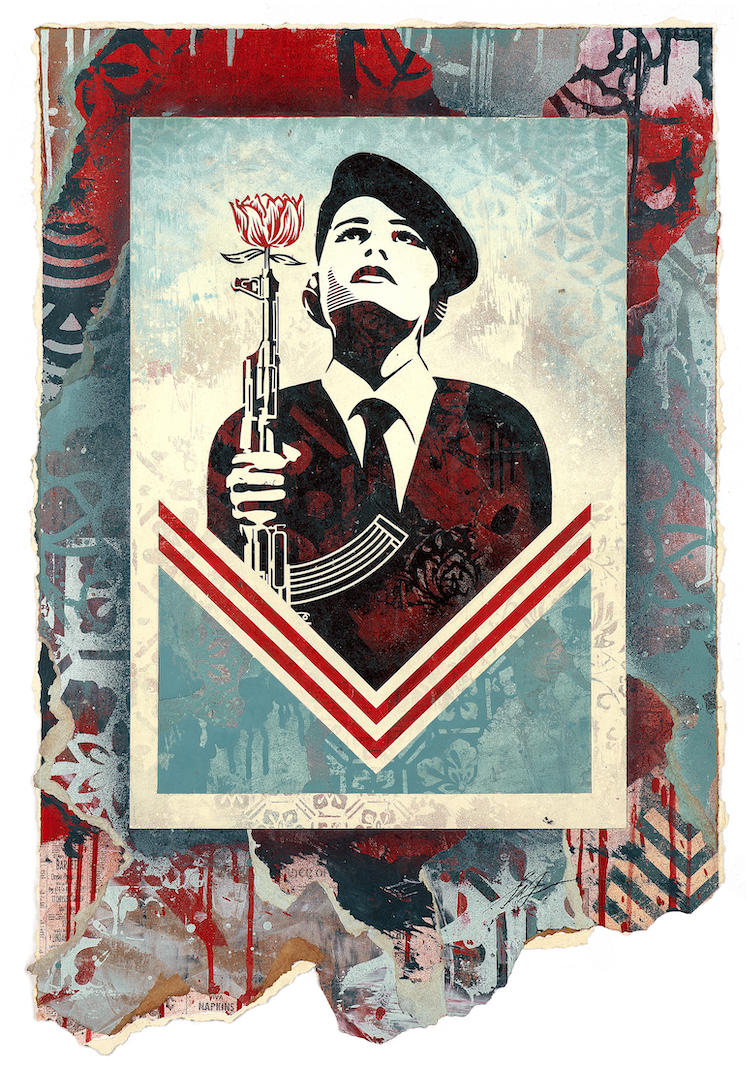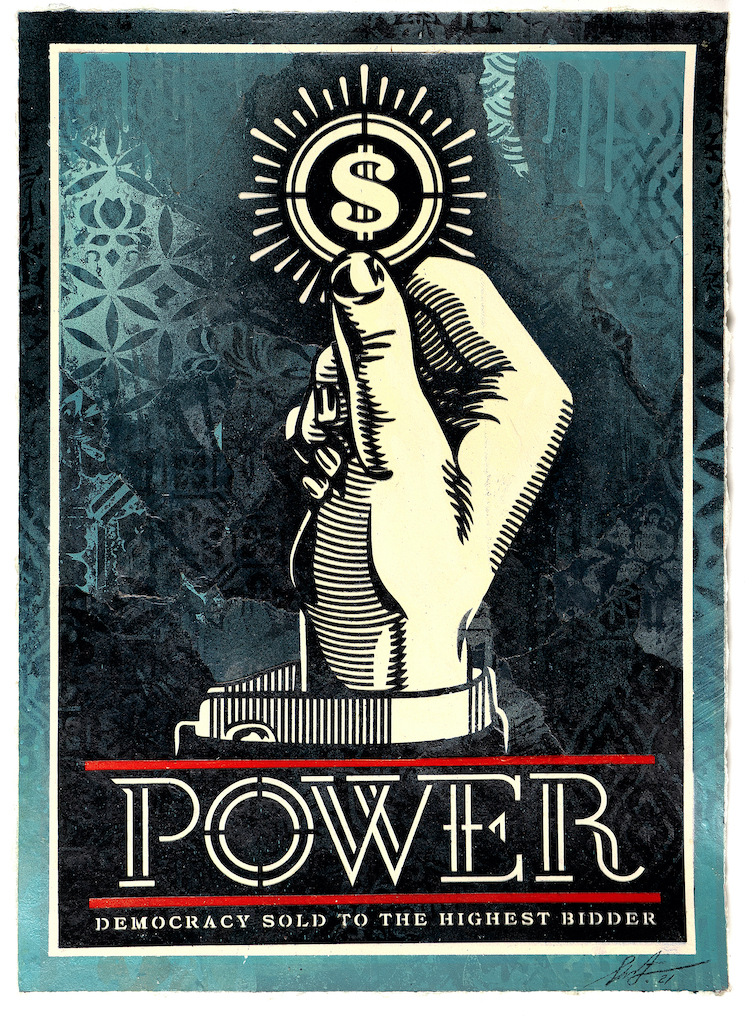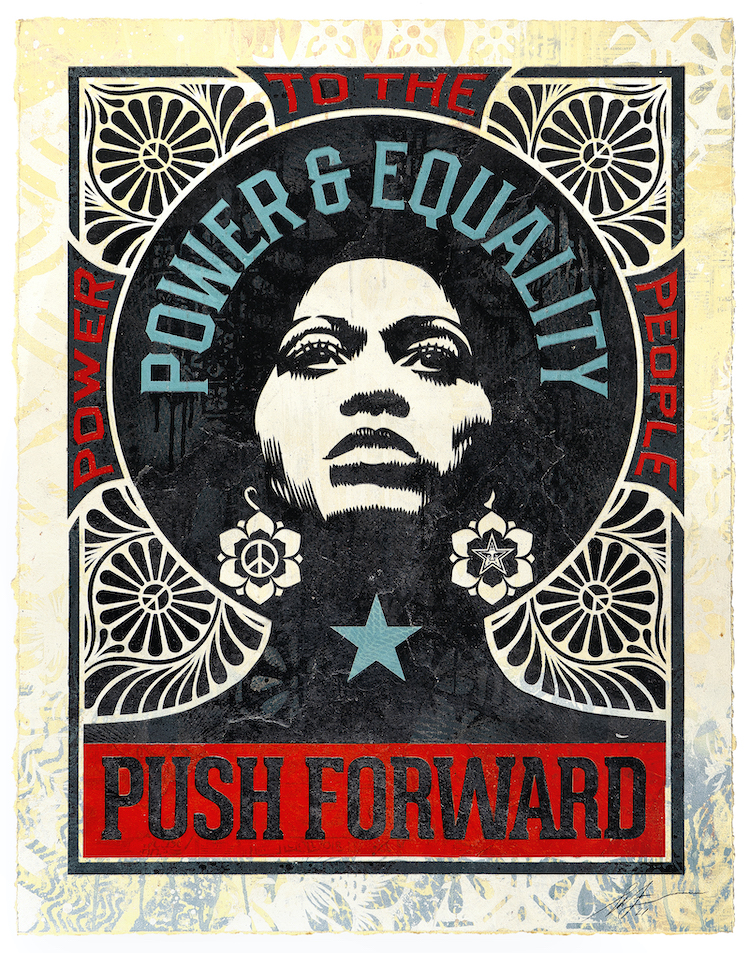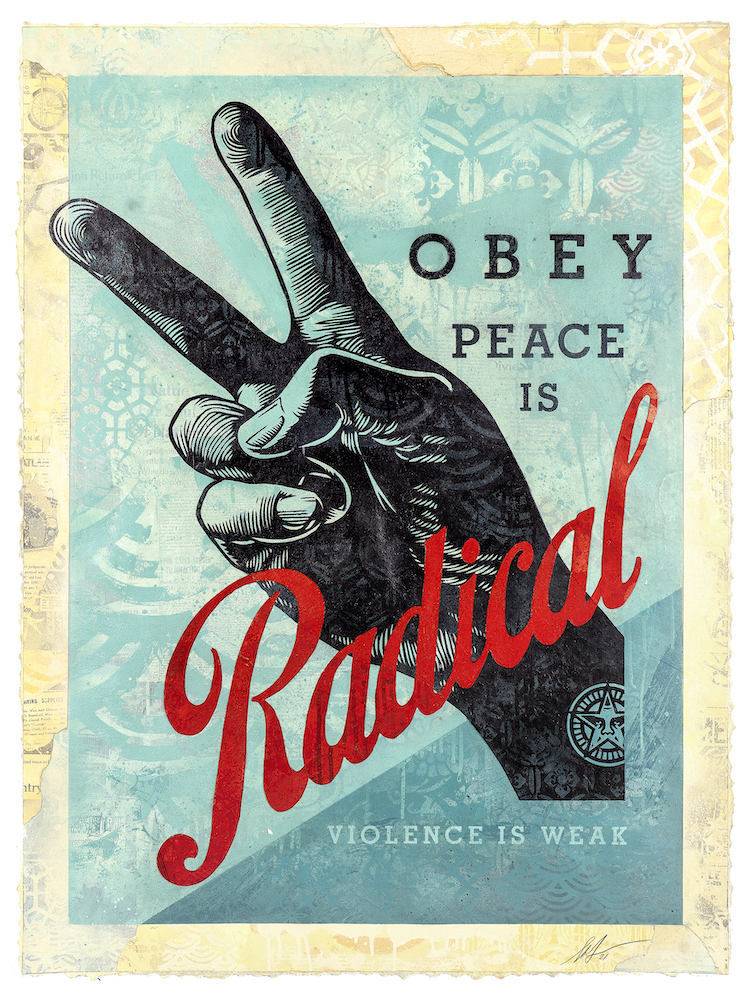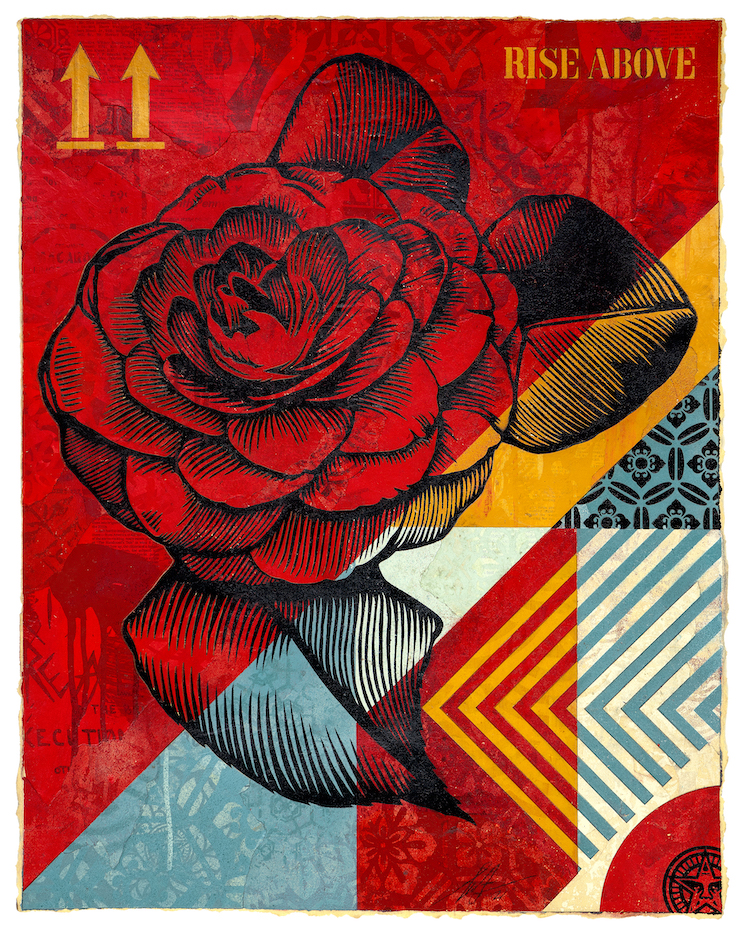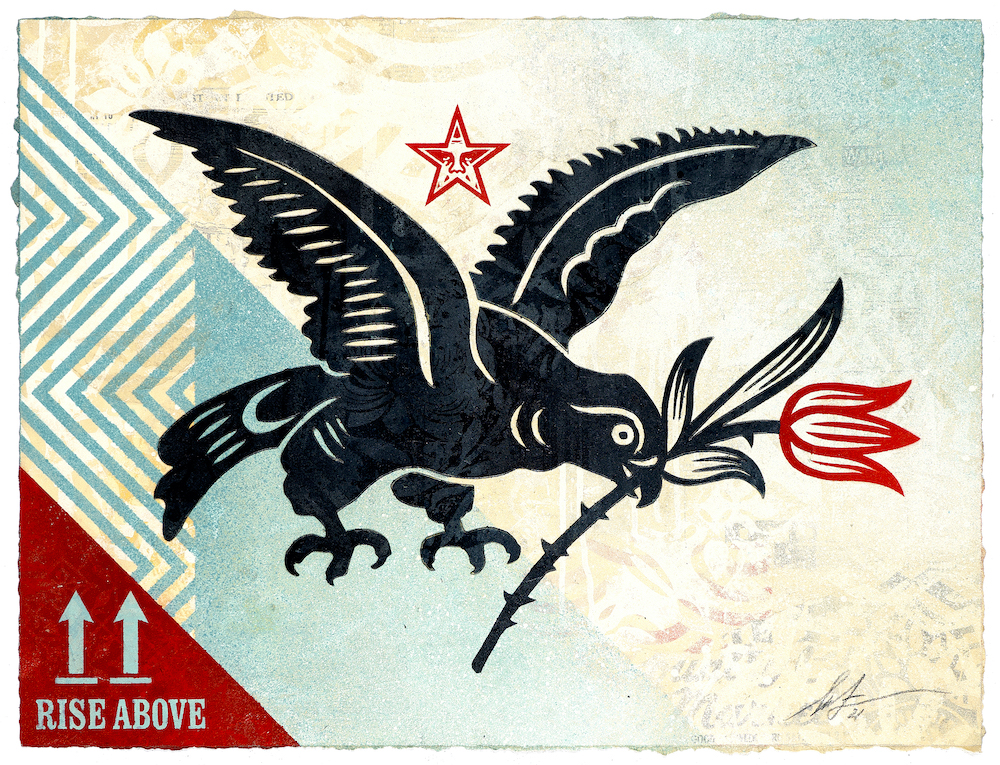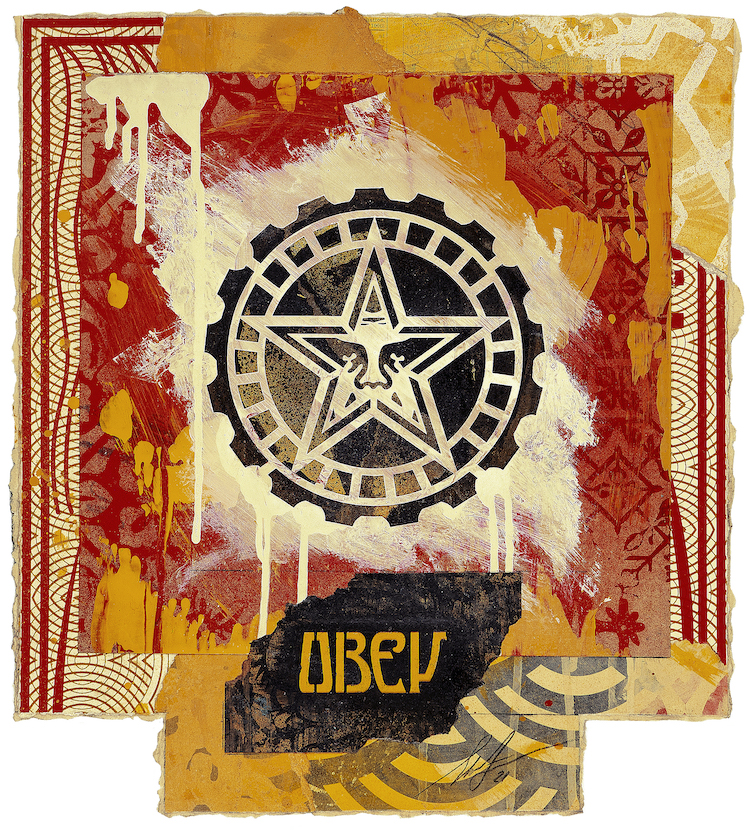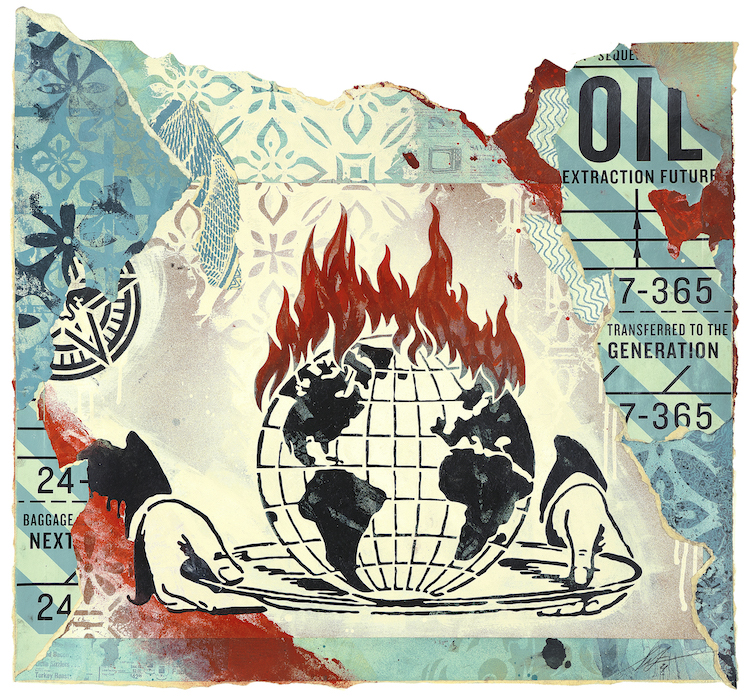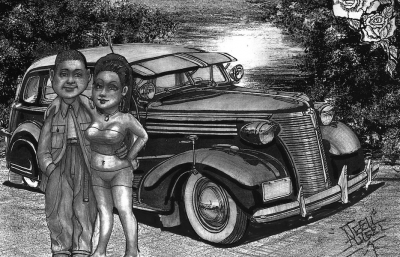In conjunction with the newest exhibition, BEYOND THE STREETS on PAPER, on view at the SOUTHAMPTON ARTS CENTER in Southampton, New York through August 28, 2021, the BTS team has compiled a series of interviews themed around the idea of "back to the drawing board." The idea of the exhibition was to speak about democratic means to creating art and a sense of immediacy and urgency working on paper can elicit. We will be sharing some of those interviews throughout the shows run, and today, we share a talk with the influential and world renowned artist, Shepard Fairey.
Has the past year impacted or influenced your work in any way? How so?
Shepard Fairey: Covid being a global pandemic, has, of course, made me think about the delicate interconnected nature of humanity. Additionally, it has made me consider the delicate nature of the environment and how that affects all humans and other species. For many years, I've created artwork addressing environmental concerns and climate change. Still, the pandemic has given me even more motivation to address those issues and the fragility of our planet in my work. I feel lucky that through the pandemic, I could still work in most of the same ways I could pre-pandemic and the lack of in-person social engagements meant that I could spend more time on my art thinking and experimenting, which I found therapeutic and rewarding.
How has the mood of your most recent work changed or shifted from past work we've seen?
Over the last couple of years, I have been using an expanded color palette that I think is a bit more universally appealing and less aggressive or propaganda-like. What I have been trying to do is make visually appealing images and lure the viewer into the ideas of the piece rather than just provoking them. Because I deal with challenging topics around the environment and social justice in my work, the content may be provocative, but the aesthetics are less inflammatory. 
What would you say is the medium that has defined your work as an artist?
Of course, most people know me as a street artist. The street as a democratic medium and a medium that conveys empowerment and disruption is very important to the philosophy and dissemination of my work. The medium that has most impacted the aesthetics of my work is screen printing, which allows me to produce multiples of my imagery and requires a simplification of the images to a series of flat colors. The medium of screen printing was crucial in influencing the evolution of my style to make my images bold and iconic with a limited color palette. My style is recognizable mainly because of the primary mediums I've chosen for my work. Stencils also work with the same principles, and I often use stencils for my fine art.
When was the last time you produced works on paper?
Today. I'm always working on paper, and even some of my work on canvas is actually work created on or out of paper that is then glued to canvas.
What does working on paper look like for you?
Almost all of my work uses collage as an element, so my works on paper are similar aesthetically to any of my fine art pieces. I love torn edges, which sometimes makes me prefer my works on paper to those on canvas because the art piece becomes almost an artifact within a frame. 
It seems like in the past year artists everywhere quite literally went back to the "drawing board." What was that experience like for you as an artist or an individual?
I always spend a lot of time in my art studio, but this past year, I spent even more uninterrupted time than usual working on art pieces. I felt a lot of empathy and stress for people negatively impacted by the pandemic, but for me much of the pandemic was a welcome escape from the busyness and obligations I normally have. It was a nice reminder that art is my best communication tool and my best form of personal therapy.
What does urgency mean to you?
I always feel like the clock is ticking, so urgency simply means looking at what I want to accomplish in the scheme of my own life and all the world's problems and thinking about how I can use my time effectively to accomplish what's important to me.
Has your relationship with time changed at all in regards to creating?
I've always tried to work efficiently, but at the same time, I don't settle for a result that is short of my vision, even if it is taking me longer than I'd hoped it would to find the right solution. Time is very important but making work I'm proud of is the most important thing. 
What are some new hobbies or skills you cultivated in the past year that you have continued to keep up?
I've always enjoyed reading, but I've spent even more time reading books on several different topics during the pandemic. We live in a time of media fragmentation and rapid-fire communication. Reading books helps me to crystallize my thoughts about complex things and apply those ideas to art I'm making or communicate about issues in a sophisticated way that I feel confident standing behind.
Any playlists or podcasts you listened to while making your works on paper?
One of the things that I have been doing is creating different band anchors on Spotify and enjoying the discoveries of music related to those bands that I didn't know. Whether that is something older like Gang of Four or more recent like Run the Jewels, it is a great way to let technology throw some things at me to like and curate through the process. The way that used to work was when I would go out and DJ and hear the sets by the other DJs, but that obviously has not happened during the pandemic.
BEYOND THE STREETS on PAPER is on view at the SOUTHAMPTON ARTS CENTER in Southampton, New York from July 17—August 28, 2021

